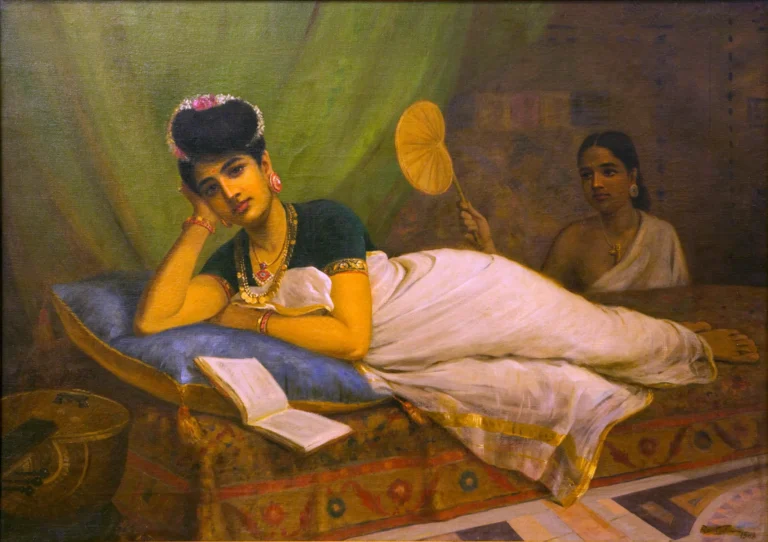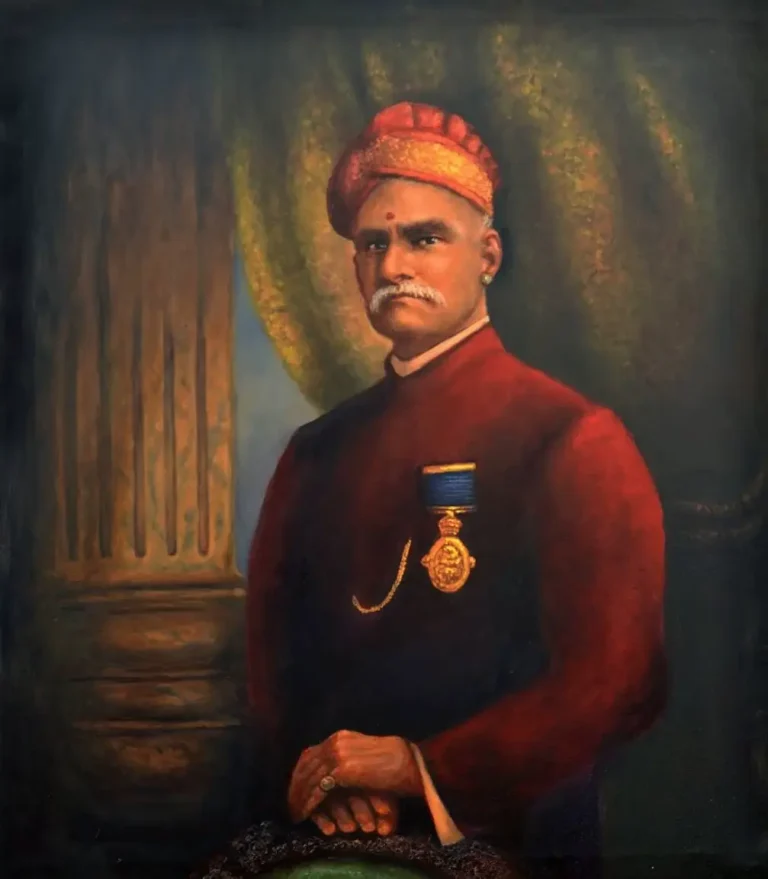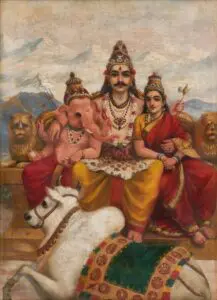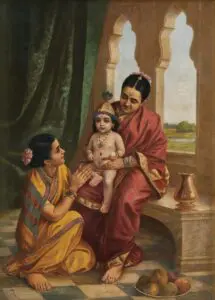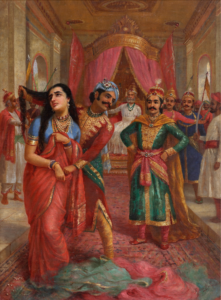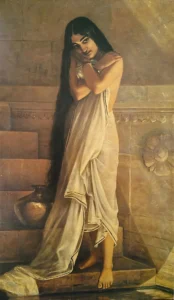Reclining Nair Lady
Created in 1902, Raja Ravi Varma's Reclining Nair Lady presents a stunning portrayal of a Nair woman lounging comfortably with a book. The painting captures a moment of leisure and privilege, with an attendant fanning her, reflecting the societal hierarchy of the time. This work represents the synthesis of Western techniques and Indian subjects, showcasing Varma's profound impact on Indian art through its elegance and cultural significance.
Year 1902
About the Artwork
Subject and Composition
The painting depicts a Nair woman, a member of the Nair caste from Kerala, India, reclining on a velvet couch. She is engaged in reading a book, while a dark-skinned maid stands in the background, attending to her by cooling her with a palm-leaf fan. The scene highlights the contrast between the leisure and privilege of the aristocratic Nair lady and the servitude of the maid.Inspiration and Style
The composition of the painting is inspired by Edouard Manet's 1863 work Olympia, but Varma adapted it to reflect Indian cultural and stylistic elements. This adaptation is characteristic of Varma's approach to blending Western artistic techniques with Indian themes and subjects.Did You Know
The Reclining Nair Lady serves as a window into the societal norms of early 20th century India, reflecting the intricate dynamics of wealth, class, and traditions that were prevalent at the time.
This artwork exemplifies Raja Ravi Varma’s celebrated technique of merging Western styles with Indian subject matter, highlighting the cross-cultural exchanges that enriched the Indian art scene.
Raja Ravi Varma is often hailed as the father of modern Indian art for his pioneering efforts in popularizing Indian themes through accessible art, influencing not only contemporaries but also generations of artists who followed.





